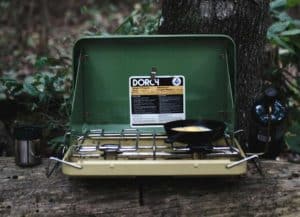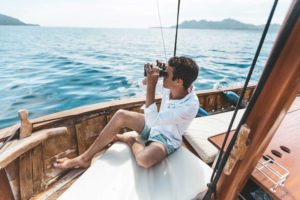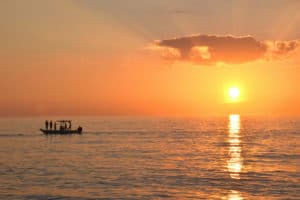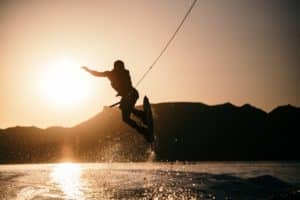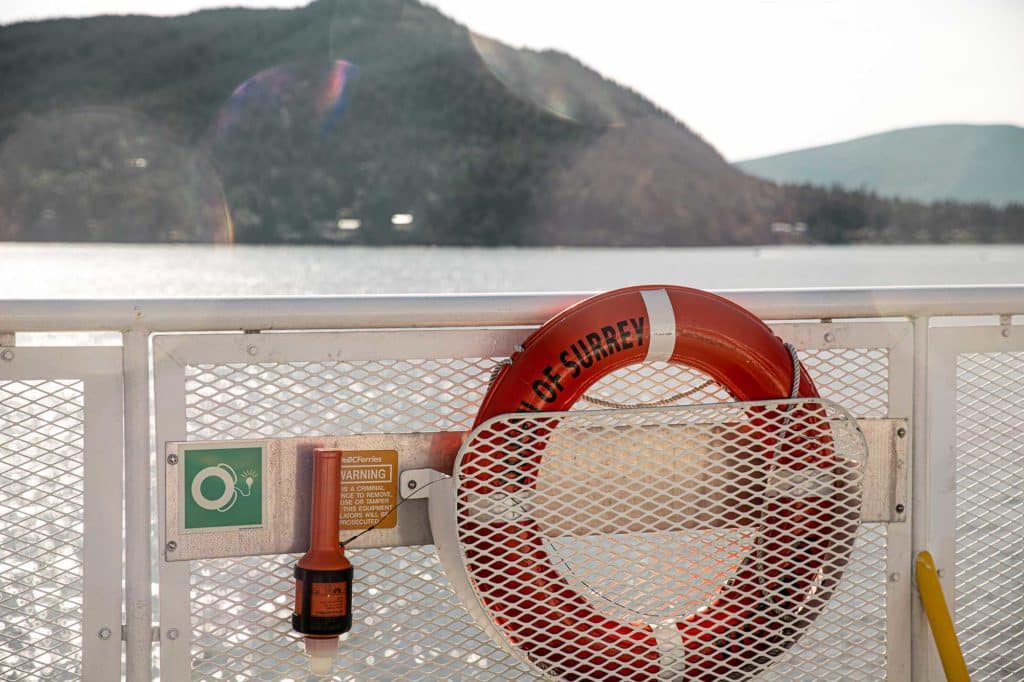
To survive a boating accident, you need to mentally rehearse your responses to as many possible risks as you can imagine. The most important safety equipment on board is your brain. But here are three of the most important safety devices you should carry.
Pyrotechnic flares were once the only rescue flares approved by the U.S. Coast Guard. Not anymore. Recognizing the inherent risk of burning flares, particularly on small, crowded inflatable rafts, and noting the short burn time, the Coast Guard wisely adopted standards for approved electronic flares. Some have shelf lives of decades, not months, and provide an important cost savings and an extra margin of safety over burning flares. But so far, only one LED flare meets Coast Guard standards for rescue equipment.
The Coasties require these flares to be visible for 7 miles. We wanted to see how they compared to each other and set up a special test by setting reflective targets at intervals on a 210-yard golf fairway and noting the distance at which we saw the rescue lights’ illumination reflected in the targets. These were our top contenders.
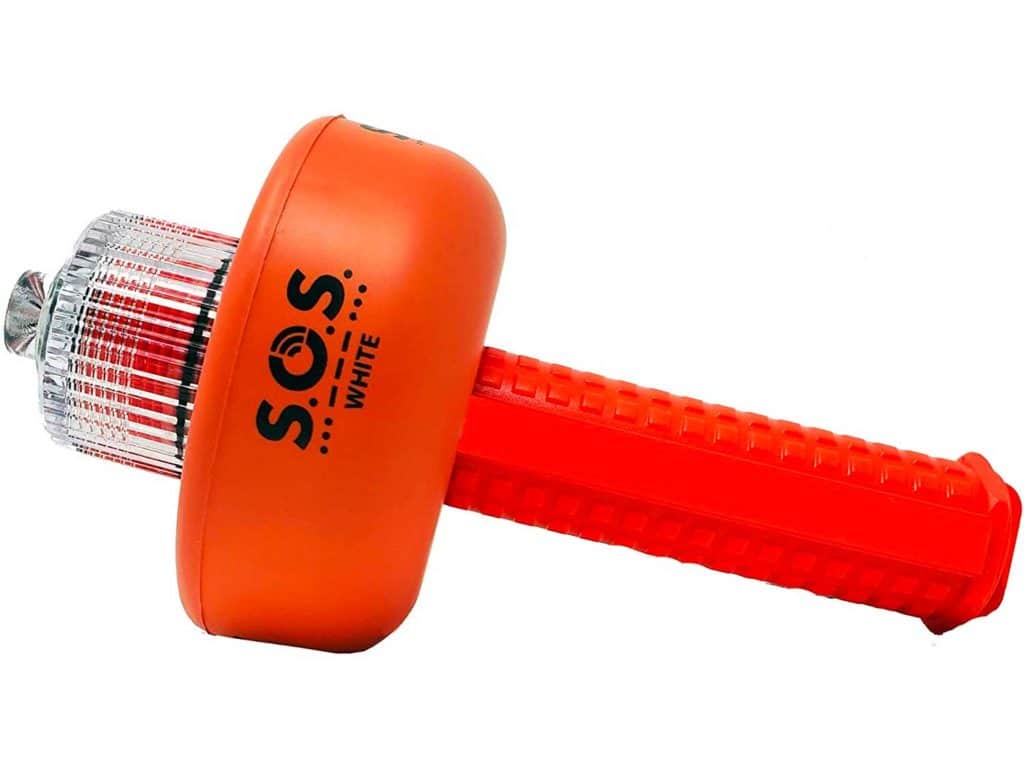
This patented floating device activates with a twist of its Fresnel lens, emitting an SOS signal reportedly visible as far as 10 nautical miles. It satisfies Coast Guard signal carriage requirements, but only for recreational boats and only when accompanied with a day-signal orange flag — which is included in each package. The latter eliminates the need to carry flammable, toxic chemical-fire or smoke flares.
Summary: This signal was simple to activate and required no additional assistance once activated. It is waterproof, floats and comes with a lanyard. The light was far brighter than we expected. Spare batteries in the ditch bag add life, and in our examination, it appeared durable enough to stand up to bangs and knocks during storage and deployment.
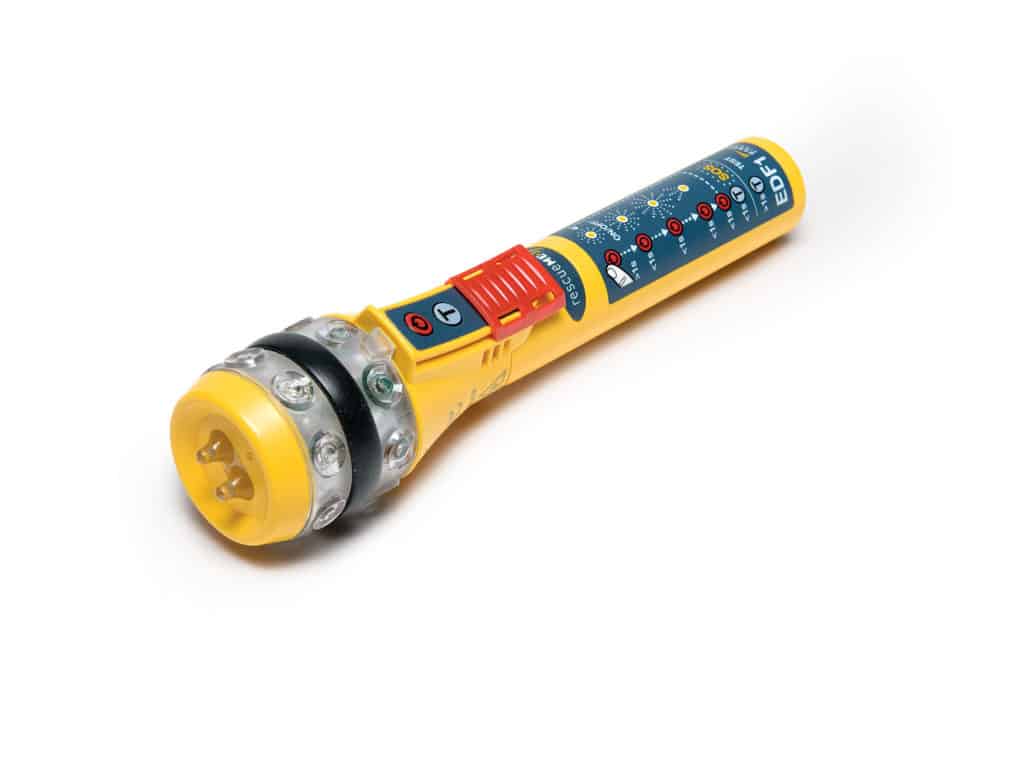
The EDF1 operates in several light modes, ranging from economy to high to ultra. It emits a red emergency strobe light in a 360-degree hemisphere broadly visible from land, sea and air. When it’s fastened to a vest, it also has a beam function that operates the LEDs on only one side. A trigger guard protects the device from accidental activation to protect the batteries. An SOS setting simplifies signaling distress.
Summary: The device is easy to use, the instructions are graphically printed right on it, and it projects light in a hemispherical orientation to be visible above and at 360 degrees. We liked the automatic SOS function. It doesn’t float and can be tethered to a vest but requires attention to keep it visible on the water’s surface. Our judgment is it would be a useful addition to a ditch bag, ideal for night distress signaling but unable to meet day-signal carriage requirements of pyro flares.
At one time, personal locator beacons served only to send a one-way message via satellite to rescue personnel. The wait for rescue is always painful, but more so when you don’t know if anybody knows you need it. Today, however, PLBs have improved astronomically because they can also use satellites for other communications, such as texts, family tracking and the ability to summon non-emergency towing assistance. Some can even receive a message, such as “help is on the way.”
We cold-started each device and initiated a test message to see how long it took to link to its satellite constellation and receive the message via Gmail. We assume this process should approximate the time needed to send and receive an SOS.
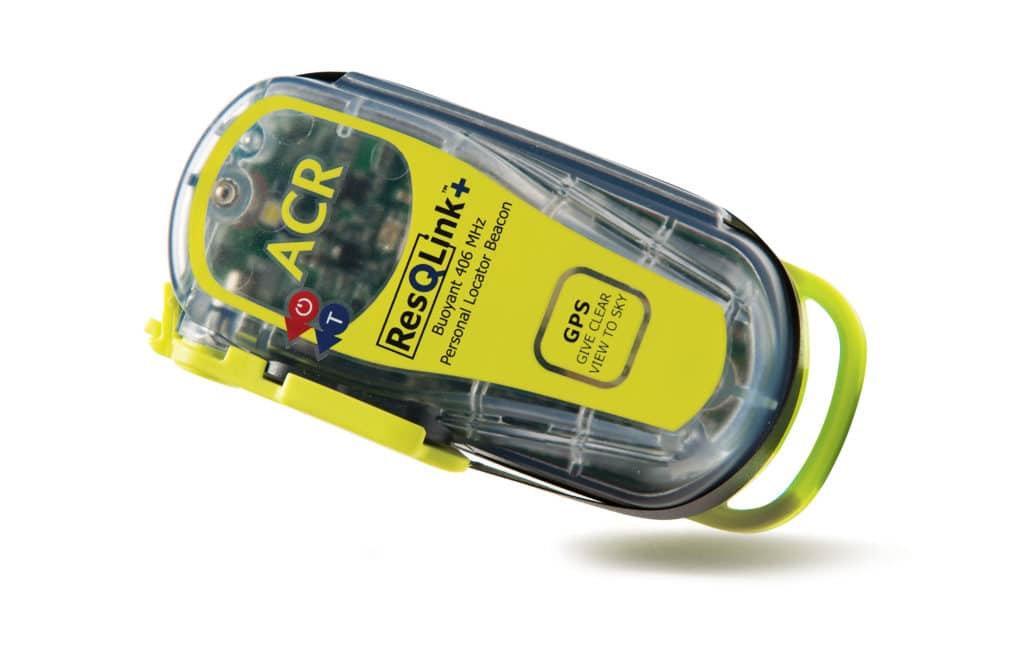
The one-way standard for emergency personal locator beacons, it communicates with high-orbit satellites, transmitting the distress signal. General rescue locale is determined mathematically by the satellites and reported directly to rescue operators. Once they’re in the vicinity, the PLB is tracked by its locator beacon.
Cool Because: The self-test function lets you know the PLB is hooked up and running. A rescue strobe aids night location during rescue. Also, it connects directly to international Cospas-Sarsat rescue authorities.
Pros: It gave the fastest “OK” transmit time in our test and offers free replacement if it saves your bacon. The communications subscription at 406link.com also gives low-battery notifications.
Cons: It’s able to send only one preprogrammed message.
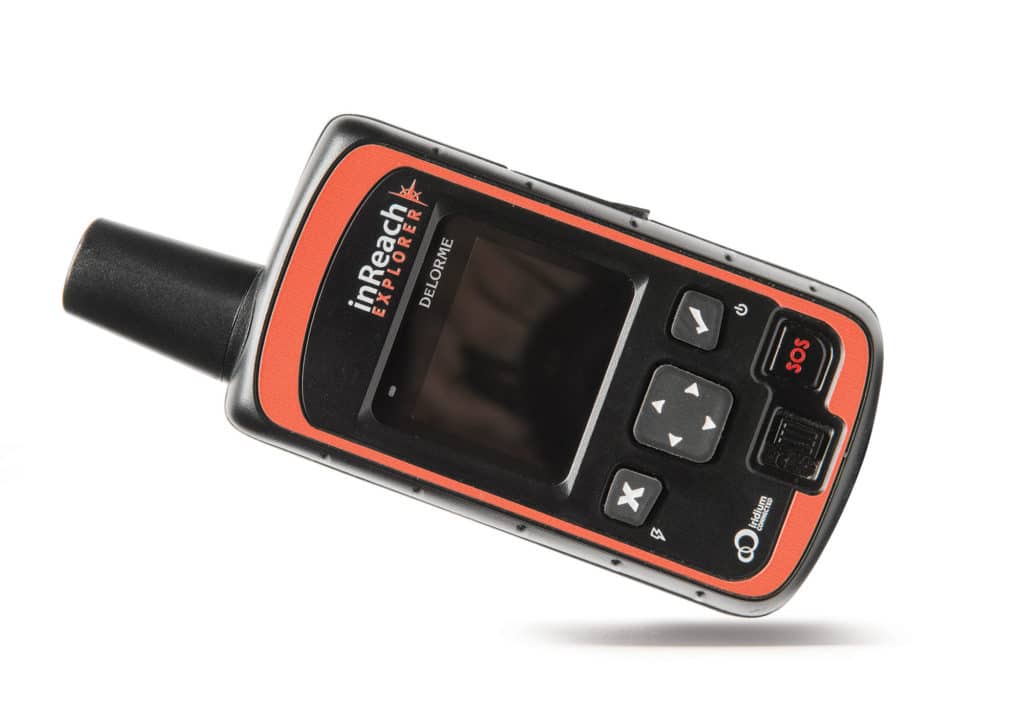
This device is a handheld three-in-one GPS, PLB and two-way satellite communicator. Save and store waypoints and navigate back to them while tracking progress on a color-coded map. A digital compass, altimeter and accelerometer improve utility. Connect iOS or Android devices loaded with the free DeLorme Earthmate app via Bluetooth and you can download maps, track your progress on the Web, and create and manage routes and navigate to them. The device becomes an operating partner with the InReach.
Cool Because: With the InReach service, you can plan trips, routes and messaging online and execute them with the device. Pelagic anglers use the device in partnership with Roffer’s sea-temperature service to update custom fishing plans.
Pros: Two-way communications are fun and reassuring.
Cons: The small screen makes navigation awkward.
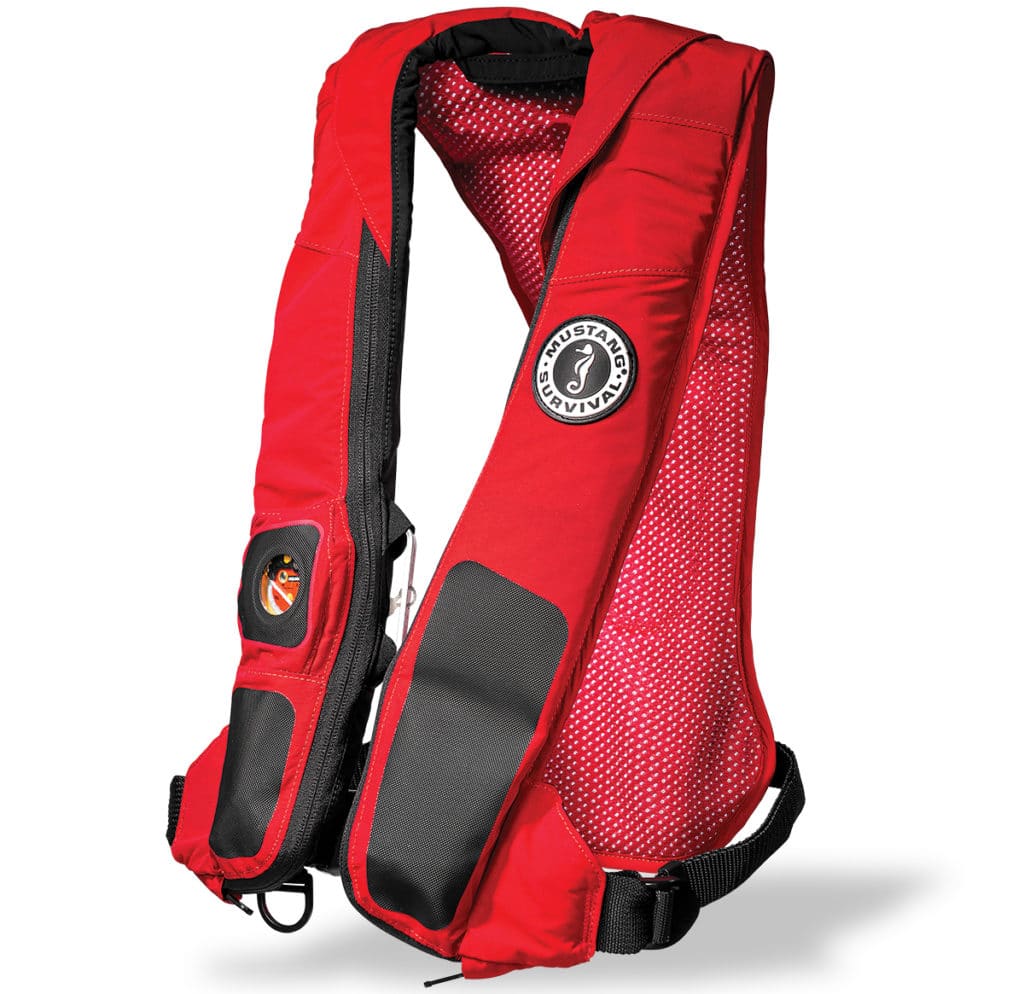
The numbers are sobering. According to Recreational Boating Statistics published by the U.S. Coast Guard, 80 percent of boating deaths are due to drowning, 83 percent of victims were not wearing a life jacket, and two-thirds of drowning victims are good swimmers. Choosing to wear a life jacket is the best way ensure fewer boating deaths.
But which life jacket should you choose? There are an astounding array of styles and types of life jackets to choose from. To help you make the best selection, we’ve tested these two highly wearable examples for your consideration.
Mustang Survival is the brand many commercial mariners have relied on since 1967. That the jackets are pricier is immediately apparent and supported in style and design. Foremost, the hydrostatic trigger inflates the air bladder the moment it sinks 4 inches below the water, which is when hydrostatic pressure triggers it. Finely woven nylon fabric is tough, the cut minimizes chafing around the face and neck, and rubber reinforcement protects the most exposed areas. The back is wide and soft for support and comfort and ventilated for warm-weather wear.
Pros: Hydrostatic inflaters are the fastest inflaters and can’t be triggered by rain or spray. The provided 38 pounds of buoyancy is enough to right an unconscious person and hold their face out of the water in the roughest conditions.
Cons: The trigger system is heavier and bulkier and costs more than lighter-weight but slower-dissolving bobbin-triggered devices.

